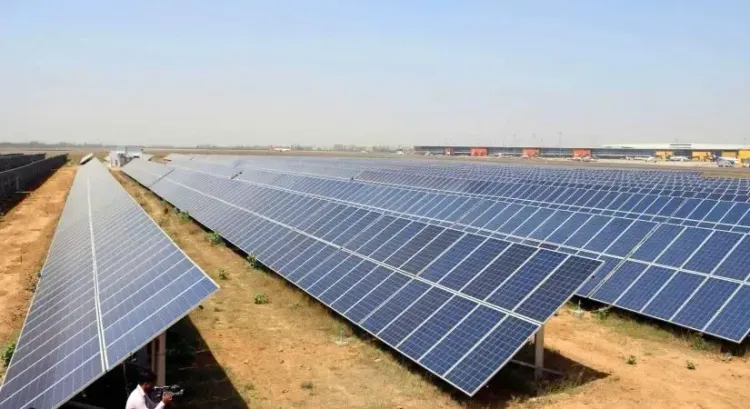Will India's solar module manufacturing capacity reach 165 GW by March 2027?

Synopsis
Key Takeaways
- India's solar module capacity expected to exceed 165 GW by March 2027.
- Strong government support is a key driver of growth.
- Annual installations predicted to be between 45 and 50 GWdc.
- ALMM List-II encourages increased cell manufacturing.
- Risks associated with dependence on China for materials.
Mumbai, Nov 6 (NationPress) The manufacturing capacity for solar photovoltaic modules in India is anticipated to exceed 165 GW by March 2027, rising from around 109 GW currently, according to a report released on Thursday.
This significant growth is largely attributed to robust government backing through initiatives such as the Approved List of Models and Manufacturers (ALMM), the basic customs duty imposed on imported cells and modules, and the production-linked incentive scheme, as highlighted by the ICRA report.
The forecast predicts annual solar capacity installations between 45 and 50 GWdc, while annual module production is expected to reach 60 to 65 GW. This disparity may create a surplus in supply, potentially leading to consolidation among smaller and specialized module manufacturers.
Moreover, the ALMM List-II for cells, set to take effect in June 2026, is encouraging original equipment manufacturers (OEMs) to ramp up cell production to about 100 GW by December 2027, a significant increase from the current 17.9 GW listed under ALMM, the report indicates.
Additionally, the recent US tariffs have shifted the supply focus from export markets back to domestic markets.
However, the report suggests that vertically integrated manufacturers are likely to gain long-term advantages due to enhanced control over their supply chains.
Ankit Jain, Vice President and Co-Group Head of Corporate Ratings at ICRA, mentioned that the operating profitability for domestic solar OEMs, currently at 25%, is expected to decline due to competitive pressures and the build-up of overcapacity.
With the ALMM requirement for solar cells coming into effect in June 2026, a timely and significant increase in cell manufacturing capacity will be critical in the short term, Jain added.
Dependence on China for wafers and ingots poses considerable risks for the sector's transition, given China's overwhelming influence in global supply chains and potential geopolitical constraints on backward integration, as noted in the report.










